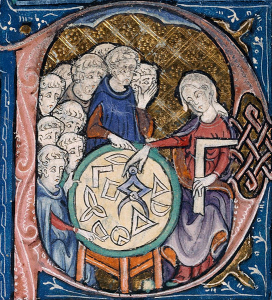Suppose you are a woman living in the US and you would like to be a mathematician and work in academia. Suppose also that you would like to have children and spend some time with them. Let us say that you want two or three children and you would like to be with them at home for at least their first two or three years. That is, in total you need to devote 5 or 6 years to this endeavor. When would be a good time for you to have children? American women mathematicians are commonly advised to postpone having children until tenure.
Let us look at the situation more closely. Is it a good idea to have children before you earn your PhD? There are many non-mathematical reasons not to have children too early:
- You do not know yourself well enough to be able to choose a good husband.
- You might not have met the man you love yet (see my essay The Mathematical Path to the Right Husband).
- You might not have enough money to support yourself and your children.
- If you have not yet definitely decided to become a professional mathematician, you might still be clueless that your future career contradicts your plans for children.
There are also mathematical reasons not to have children too early. My former adviser Israel Gelfand liked to tell everyone that mathematicians generate all their best ideas before the age of 23. His views may be extreme. After all, we know of mathematicians who made great discoveries later in life, but it could be that they did this using their mathematical wisdom rather than the processing power of their brains. It may well be beneficial to start your first research early in life. I am not sure about math creativity, but I swear that it is much more difficult to learn new things as I age.
In addition, you might need to relocate frequently to maintain your math career and it is more difficult to do that with children. It’s hard on the children too. Besides, having children early means that while working on your tenure, you will be distracted by your kids and their problems, leaving you less time for your research.
You might think that the closer you get to your PhD, the more the situation improves. In reality, there is a very important reason not to have children while you are in grad school. When you start working on your first topic, it is very important not to be interrupted. If you take a big break someone might finish what you started. When you come back, your topic might be resolved and you would have to start all over again.
The situation after graduate school is even worse. When you apply for jobs, employers are likely to count how many papers you have published per year after your PhD. So you need that number to be high. You can’t afford to dilute your paper count per year by a several-year break. Besides, if you have an interruption in your research it might be considered as a weakness and you might lose in comparison with other applicants. Let us break down the time between PhD and tenure into three periods: postdoc, visiting positions, and tenure track. For each period there are extra reasons not to have kids:
- Right after the PhD you begin looking for postdoc positions. All of them have formal time constraints: you are not allowed to apply for these positions if you are more than 3 (or maybe 5) years past your PhD. To have children during the postdoc period is really a bad idea.
- After the postdoc you might have several visiting positions. They usually require yearly relocations and you need to produce something new every year, so that your current curriculum vitae is different from the one you sent to the same place a year ago. At this stage of your life you are much better off without a husband — forget about children.
- When you have tenure track, you are so close to tenure that you might not want to put your dream at risk after so many years of sacrifices.
For all of these reasons, advice to wait until tenure makes sense. There is one big problem with it though: you usually get tenure in your late thirties. It might be too late for children. You might not want to risk that.
You can always compromise by having one child instead of three. Or you can suppress your desire to spend a lot of time with your children by having hired help, which means that you will miss a good deal of your child’s development, and your child will miss a lot of your love. You can compromise your academic goals by taking a more stable, but less research-oriented, technical job in industry. Or you might get lucky and marry a househusband.
In short, a math career is very kids-unfriendly — there is no right time. If you’re a woman mathematician who wants to spend time with your kids, prepare for pain and disappointment.
But here is an unconventional idea you might consider.
After you finish working on your PhD, postpone your actual defense by 5 years, and have your kids in between. This way all your PhD results will be published and no one can interfere with them. At the same time, the clock that counts your publications per year after your PhD will start 5 years later.
My idea is not a good solution — you will still have many problems — but it might be better than waiting ’till tenure. I do wish there were a better way.
Share:





 I am looking forward to the
I am looking forward to the